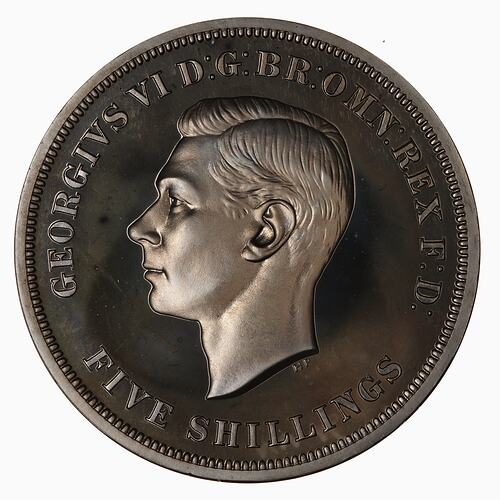Thomas Humphrey Paget was born in London and studied at the Central School of Arts and Crafts and at the Royal Academy Schools, where he won a Landseer Scholarship. Following naval service during World War I, he returned to the Central School as a visiting teacher. In 1923 his name was put forward by the newly formed Royal Mint Advisory Committee among those to submit designs for a medal to be awarded to nurses at the Bristol Royal Infirmary. His design was selected.
In 1935 he prepared a medal for the Honourable Company of Master Mariners, with a successful portrait of the Prince of Wales (later Edward VIII), who was Master of the Company.
After the death of George V in 1936 the Deputy Master of the Royal Mint chose Paget to prepare models for the obverse of the proposed coinage of Edward VIII. When the King abdicated in December that year Paget was chosen to prepare designs for the coinage of his successor, George VI. His bare headed portrait was used on the coins of many countries including the United Kingdom, Australia and Canada.
After World War II Paget undertook many commissions, including seals for the Central African Federation, the South Arabian Currency Authority and the National Coal Board; his medals included designs for the Society of Chemical Industry and the Royal Society of Medicine. He designed coins for Bolivia, the British Caribbean Territories, Burma, the Central African Federation, Iraq, the Isle of Man, Jordan, New Zealand, Nigeria, South Arabia, Southern Rhodesia, Uruguay and Western Samoa.
His last major commission was a medallic portrait of the Duke of Edinburgh.
References
Royal Mint bulletin, 1990
More Information
-
Keywords
-
Authors
-
Article types
